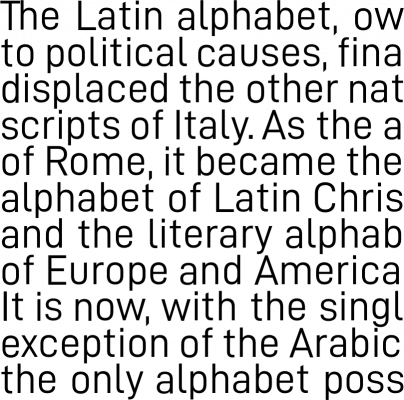
This enabled an exact definition of details such as the amount of overshoot of round characters (e.g. In 1980, the DIN typefaces were redrawn by Adolf Gropp (1911–1996), a lettering artist from Frankfurt. Also, the Berthold type foundry adopted the DIN typefaces for their optomechanical phototype setting systems such as Staromat. The transferable-lettering-sheet company, Letraset made several variants available in the 1970s. Note the different structure of the 'a' and how curved strokes do not thin as they connect, as at the join of the 'h'. Releases Ī sign in an older version of DIN Mittelschrift. In a similar vein, the International Standards Organisation developed its own derivative, Isonorm, in 1980. The sans-serif is similar to Gill Sans and to Johnston the serif reflects the classical Renaissance humanist model. Created by a group of designers that included Jan van Krimpen, the design has no similarity to the DIN standard: it is a humanist family with serif and sans-serif styles.

Inspired by the DIN standard, a consortium of Dutch organisations created an equivalent lettering standard, NEN 3225. Although of a similar design, the DIN typefaces did not incorporate the elegance of this stylistic trend. At the Bauhaus, the use of coarse grids for designing typefaces was advocated by Herbert Bayer and Joost Schmidt during the Dessau period. Sans-serif lettering and typefaces styled around geometric shapes, along with Art Deco in general, was very popular in the 1920s and 1930s. The 1943 version of DIN 1451 added a set of Cyrillic characters, although their design did not match the weight and proportions of DIN Mittelschrift. During World War II, DIN 1451 was also adopted in the Protectorate of Bohemia and Moravia. They were released as celluloid lettering stencils for smaller applications, as larger metal stencils for application to machinery, vehicles and airplanes, and as cast metal lettering for street and building signage nevertheless, printing type conforming to DIN 1451 have never been produced. Within the scope of public and technical lettering, the use of the DIN 1451 typefaces spread rapidly once they were adopted. Stencils for lettering technical drawings to DIN standards The DIN Committee of Typefaces was headed by the Siemens engineer, Ludwig Goller (1884–1964), who also led the central standardization office at Siemens & Halske in Berlin, between 19. Then, as a byproduct of the 1920 consolidation of all German railway companies into the Deutsche Reichsbahn, the Prussian railway's typeface quickly became a de facto national standard, even before the DIN Committee of Typefaces took up its work on DIN 1451 a few years later. Ten years later, the company – by then, renamed Prussian-Hessian Railways – additionally required that signage lettering on railway platforms and station premises also be rendered according to the 1905 master template. This specification was published in a document known as Musterzeichnung ("Master Template" lit. The origins of DIN 1451 Engschrift ("condensed face") for hand lettering date back to 1905, when the Prussian state railways prescribed a standardized lettering style for use on all of its rolling stock. These were to be used in the areas of signage, traffic signs, wayfinding, lettering on technical drawings and technical documentation. It contained several standard typefaces for mechanically engraved lettering, hand-lettering, lettering stencils and printing types. In 1931, the DIN institute published DIN 1451. German road signs using both the DIN 1451 Mittelschrift (left) and Engschrift (right) typefaces Many adaptations and expansions of the original design have been released digitally.

Due to the design's legibility and uncomplicated, unadorned design, it has become popular for general purpose use in signage and display adaptations. Originally designed for industrial uses, the first DIN-type fonts were a simplified design that could be applied with limited technical difficulty. Similar standards existed for stencilled letters. It was defined by the German standards body DIN - Deutsches Institut für Normung (German Institute for Standardization), pronounced as "Din", in the standard sheet DIN 1451- Schriften (typefaces) in 1931.

Please help improve this article by adding citations to reliable sources. This article needs additional citations for verification.


 0 kommentar(er)
0 kommentar(er)
